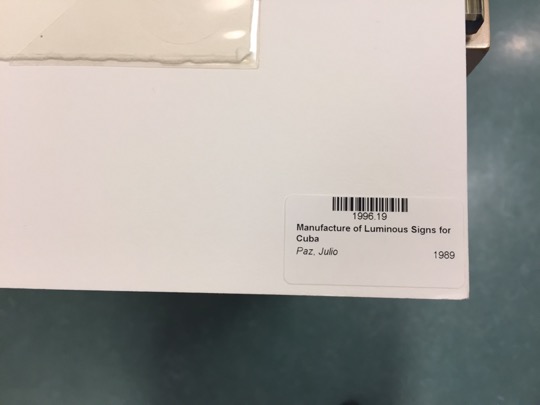Barcoding Project: Print Study Centre Part 2: Object Barcodes and the First "Moves"
27 March 2017
When the first batch of prints from the University of Alberta Museums and Collections Services’ A Little Bit of Infinity exhibition arrived at the Print Study Centre to be returned to their permanent storage locations, collections staff incorporated the application of barcodes to the matted and framed prints into their usual procedure for putting away objects.
The same 2”x1” polypropylene labels used for locations were also used to create object labels. Each label has the accession number, title, artist, and date of each artwork on it alongside a barcode.
The labels were carefully applied to the mat or permanent frame of each print in a place that would be readable but not directly contact the artwork.

For artworks with space on the mat, a barcode label was applied in the
bottom right corner, away from the artwork itself.

For larger artwork without space on the mat, the label was applied to the
mounting/framing corner at the bottom right. Again, care was taken to ensure
it was not in contact with the work.

where it can be easily found by staff but does not contact the piece itself.
For unmatted prints, a report with each artwork in the exhibition and a corresponding barcode was generated using Crystal Reports so that they could be scanned with Axiell Move. The “Home Location” (permanent storage location) was also added to this report so that staff would know where the object was to be returned to without having to search for each individual piece on the database. Pre-existing inventory sheets (also created with Crystal Reports) that are stored with the prints in each box at the Print Study Centre have had a barcode added to them. This way, any unmatted prints will still have a barcode physically associated with them.
With these location and object barcodes in place, the team was able to begin scanning with the Axiell Move application to update the locations of the exhibited artworks. They agreed that it significantly reduced the amount of time they spent updating the locations for each piece, streamlining the return process.